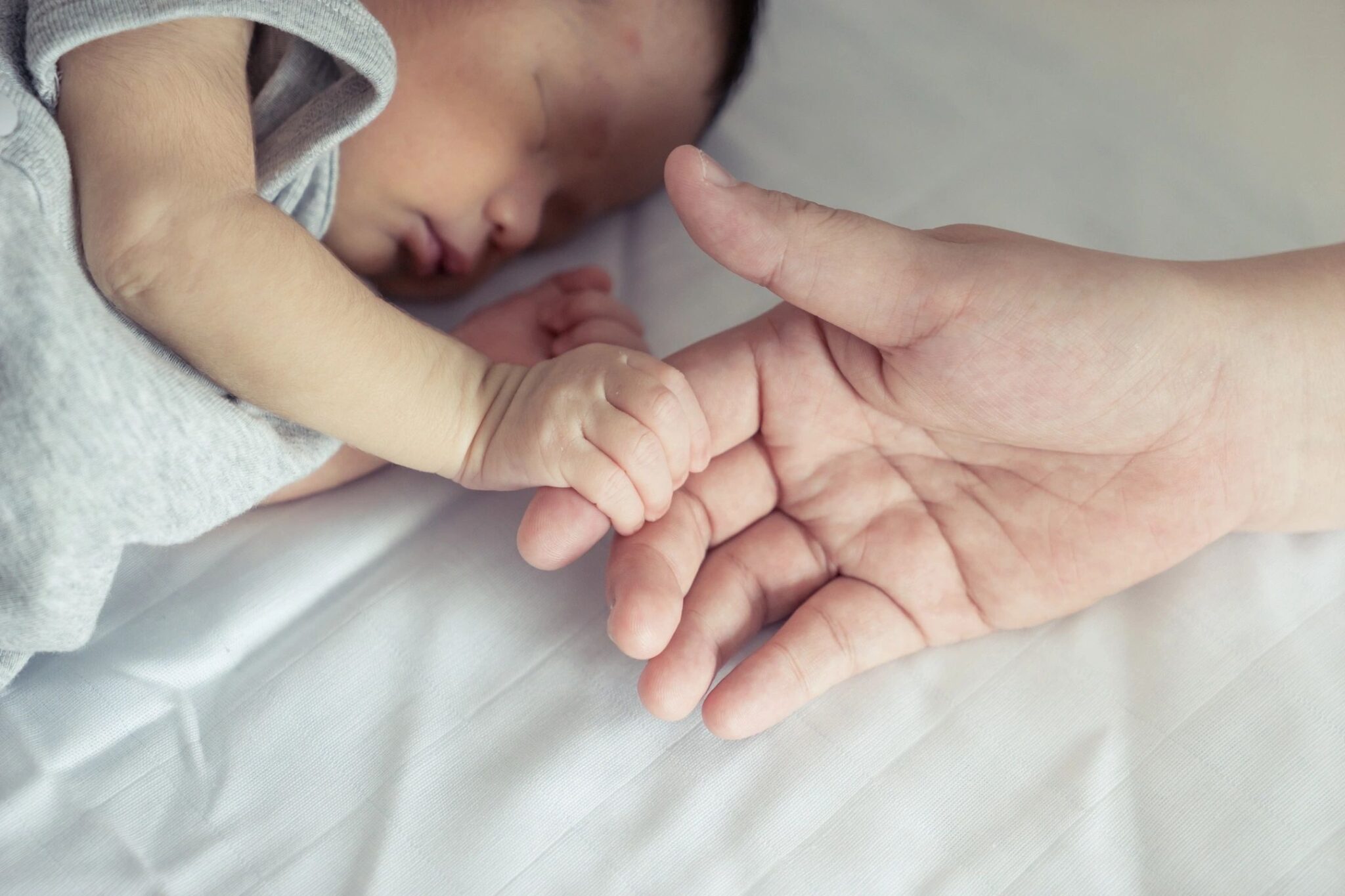Childbirth Is Both Life-Changing and Brain-Changing
Neuroscientists studying childbirth found different effects on brain cortex volume for those recovering from a natural delivery or C-section.
By Katie Lam
Bearing a child unquestionably changes your life, but how does it change your brain? There have been numerous research studies showing brain changes during pregnancy, but few go on to study the role played by childbirth.
New research from Instituto de Investigación Sanitaria Gregorio Marañón (Gregorio Marañón Health Research Institute) in Spain reveals that childbirth might act as a turning point for brain changes and that the type of labor may influence how the brain changes as well.
Brain from late pregnancy, childbirth to after childbirth
The cortex is the outer layer of the brain that plays a key role in different aspects of the human mind, like attention, memory, and consciousness. Researchers have observed a decrease in cortex volume during pregnancy by comparing first-time mothers and women that have never given birth before. However, the reduced cortical volume starts to go back up after childbirth. This means that pregnancy might cause the brain to become smaller, but then childbirth does the opposite and allows the brain volume to increase. This suggests that childbirth might play a major role in remodeling the brain.
Why do our brains change?
Our brains can change in response to both the body and the environment: this is referred to as neuroplasticity. For pregnancy-related neuroplasticity, previous research has suggested that hormones that have increased in levels during pregnancy may act to regulate neurons, affecting the brain structure. Some research also suggests that the brain network has been remodeled for parents to empathize with their children and to change how they perceive themselves.
However, this new study has put forward more. Not only does the network responsible for social cognition and self-perception change, but other brain networks like the default mode (responsible for self-focus; a bit like the background noise in all our thoughts) and frontoparietal network (which regulates the planning and execution of goal-directed behaviors) are affected even after childbirth.
The reduced cortex volume observed might be due to a change in the types and number of cells in the brain. Another hypothesis proposed by the researchers describes the reduction of microglia, a type of immune cell in the brain. As an immune cell, microglia checks for pathogens and promotes inflammation in the brain. Activated microglia and inflammatory response might cause a heightened sensitivity toward pain, making someone feel more pain than they would normally do. Fewer microglia may reduce that sensitivity and lessen the extreme pain the mother feels during childbirth.
Natural birth and C-section
Researchers also found a difference between the types of childbirth. Women that initiated labor (natural labor) and those who did not (C-section) differed in the extent of cortical reductions observed after childbirth. Women who did not initiate labor had lower cortical reductions, hence a larger cortical volume than mothers that underwent natural labor.
However, the researchers propose two different explanations for this observation. The first one is that the initiation of labor can cause the cortical volume to decrease even more at the time of childbirth. With a lower cortical volume and the same recovery rate, mothers that initiated labor would then have a lower cortical volume than those that did not initiate labor after the same amount of time. The second explanation is that childbirth does not cause a further decrease in cortical volume, but that women who did not initiate labor simply had a faster recovery rate than those who did. The researchers concluded that their results would not tend toward either of the explanations and that more investigation is needed to accept one explanation and reject the other.
RELATED: C-Sections Not to Blame for Obesity Epidemic
What about the father?
Although brain changes in the father were not examined in this research, there is research that was done in the past that can tell us more about it. Brain scans showed that there were no apparent brain changes in first-time fathers. Through that, scientists point out that brain changes during pregnancy are specific to women.
However, there is another research study that tells us otherwise. In this research done in 2021, scientists examined neural activation in expectant fathers. They found that the neural response to infant interaction videos (playing with the baby and changing diapers) differed between expectant fathers and men who were not expecting a child. They even found structural changes in specific areas of the brain, including the amygdala, an area associated with emotional processing. This paper contradicts other previous studies, showing the father’s brain might also change, even starting from the early stage of pregnancy.
RELATED: Seahorses Give a Whole New Meaning to “Dad Bod”
Could we make research around pregnancy and childbirth more inclusive?
Both studies focused on and recruited exclusively male participants as “the parent who is not giving birth” and as “the partner of the pregnant person.” However, they did not address whether their findings could apply to individuals who fulfill these roles but do not identify as male, either by sex assigned at birth or current gender identity. Therefore, there may be a gap in our understanding of the neural changes in non-male individuals who are navigating parenthood in such ways.
As to the novel study described at the start of this article, the choice of participants was expectant mothers whose gender matched their sex assigned at birth. Nevertheless, the researchers suggested promoting the inclusivity of neuroscientific research by including participants whose gender and sex assigned at birth do not match in future studies. I hope that future research around pregnancy and childbirth will be more inclusive to explore how parenthood can change the neural aspects in, but not limited to, transgender, nonbinary, and same-sex parents.
Parenthood can influence our neural system and it is no doubt a complex matter that neuroscientists are seeking answers on. Meanwhile, pregnancy and childbirth can be physically and mentally difficult for expectant parents and we should look out for the first-time parents around us and give them the support they need.
This study was published in the peer-reviewed journal Nature Neuroscience.
References
Diaz-Rojas, F., Matsunaga, M., Tanaka, Y., Kikusui, T., Mogi, K., Nagasawa, M., Asano, K., Abe, N., & Myowa, M. (2021). Development of the paternal brain in expectant fathers during early pregnancy. NeuroImage, 225, 117527. https://doi.org/10.1016/j.neuroimage.2020.117527
Hoekzema, E., Barba-Müller, E., Pozzobon, C., Picado, M., Lucco, F., García-García, D., Soliva, J. C., Tobeña, A., Desco, M., Crone, E. A., Ballesteros, A., Carmona, S., & Vilarroya, O. (2017). Pregnancy leads to long-lasting changes in human brain structure. Nature Neuroscience, 20, 287–296. https://doi.org/10.1038/nn.4458
Paternina-Die, M., Martínez-García, M., Martín de Blas, D., Noguero, I., Servin-Barthet, C., Pretus, C., Soler, A., López-Montoya, G., Desco, M., & Carmona, S. (2024). Women’s neuroplasticity during gestation, childbirth and postpartum. Nature Neuroscience, 27, 1–9. https://doi.org/10.1038/s41593-023-01513-2


About the Author
Katie Lam is an undergraduate student studying neuroscience in London but born and raised in Hong Kong. Her particular interests are mental health, art, and capybaras. Follow her on LinkedIn.




